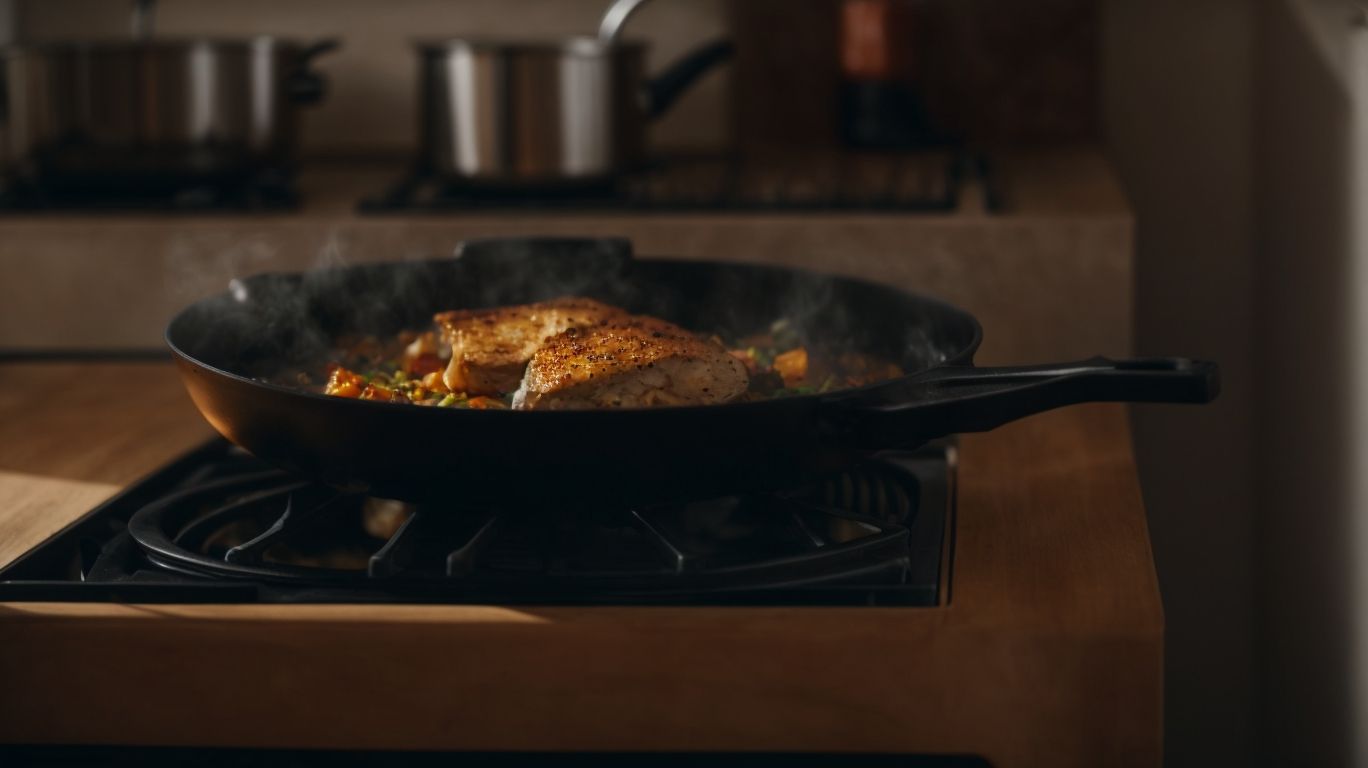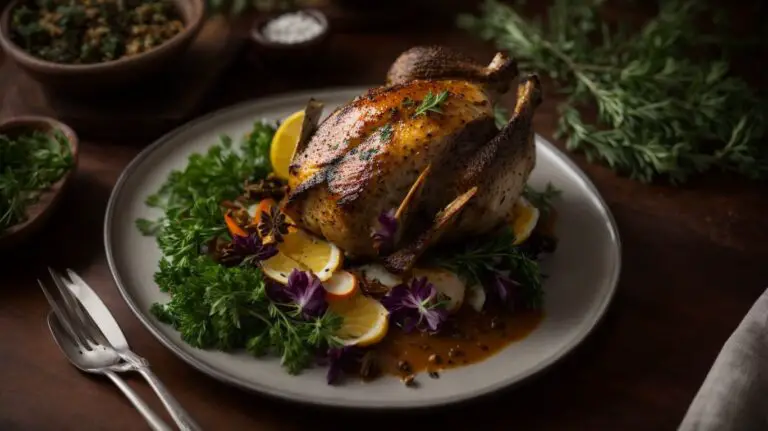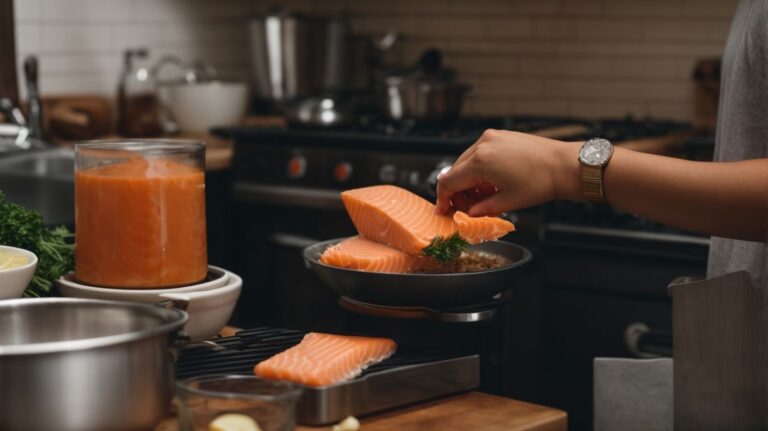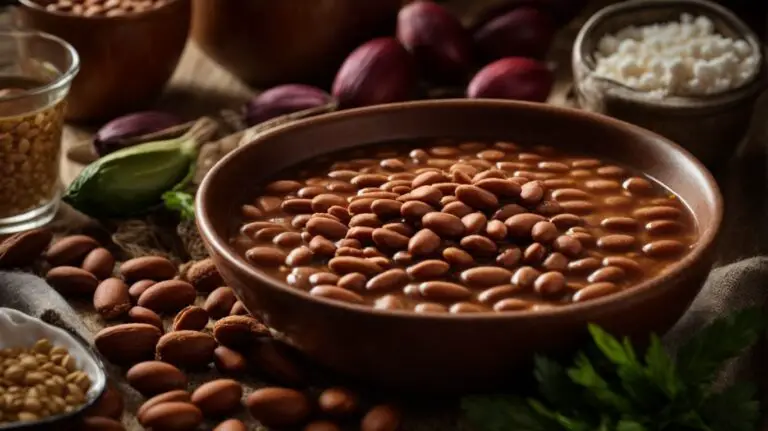How to Cook Chicken on Stove?
Are you looking to elevate your cooking skills and create delicious meals right in your own kitchen? Cooking chicken on the stove is a fantastic way to achieve quick, flavorful, and healthier dishes.
We will explore the benefits of stove-cooked chicken, different types of chicken cuts to use, the best pans for the job, seasoning and marinating tips, cooking techniques, how to check if chicken is cooked properly, and serving suggestions to make your meal truly special.
Let’s dive in and take your culinary skills to the next level!
Key Takeaways:
Why Cook Chicken on Stove?
Cooking chicken on the stove offers a convenient and quick method to prepare delicious meals with the perfect seasoning and browning.
One of the key benefits of stove cooking for chicken is the control it gives over the cooking process. With the right skillet and heat level, you can achieve the perfect sear for a juicy interior. Stove cooking allows for easy monitoring and adjustment of the cooking temperature, ensuring that your chicken cooks evenly.
Efficiency is another advantage of stove cooking for chicken. Unlike baking or grilling, stove-top cooking can be quicker, making it ideal for busy weekdays. The direct heat helps in maximizing flavor retention and caramelization, enhancing the taste of the chicken.
Quick and Easy
Cooking chicken on the stove is a quick and easy way to prepare meals, ideal for busy schedules and meal prepping.
The time-saving benefits of stove cooking for chicken extend beyond just the cooking process. With stove cooking, you can have a flavorful chicken dish ready in no time, whether it’s a simple grilled chicken or a savory stir-fry.
The cleanup is a breeze compared to using the oven or grill. You only have one pan to wash instead of multiple dishes and utensils.
Stove cooking also allows for efficient cooking techniques like searing, sautéing, and simmering, ensuring that your chicken is cooked perfectly every time.
Versatile
Stove-cooked chicken is incredibly versatile, offering a protein-rich option that can be used in various dishes such as salads, sandwiches, and wraps, adding a delicious touch to any meal.
Its juicy and flavorful nature makes it a perfect choice for stir-fries, tacos, homemade pizzas, and even pasta dishes.
Whether marinated in spices, herbs, or sauces, stove-cooked chicken elevates the taste profile of any recipe it is incorporated into.
The convenience of cooking chicken on the stovetop allows for quick and easy meal preparation, making it a go-to protein option for busy weeknights.
From simple weeknight dinners to elaborate weekend spreads, stove-cooked chicken seamlessly fits into any culinary repertoire.
Healthier Option
Opting for stove-cooked chicken provides a healthier choice, allowing for better control over seasonings, oils, and cooking methods, resulting in a delicious, protein-packed meal.
When cooking chicken on the stove, one can easily adjust the seasonings to personal preference, ensuring a flavorful dish tailored to individual tastes. By using minimal oil and healthier cooking techniques such as grilling or sautéing, the overall fat content is reduced without compromising on taste.
Stove-cooked chicken often retains more of its natural juices, keeping the meat tender and succulent. This method enhances the protein content of the dish, making it a nutritious option for those looking to incorporate more protein into their diet.
What Type of Chicken to Use?
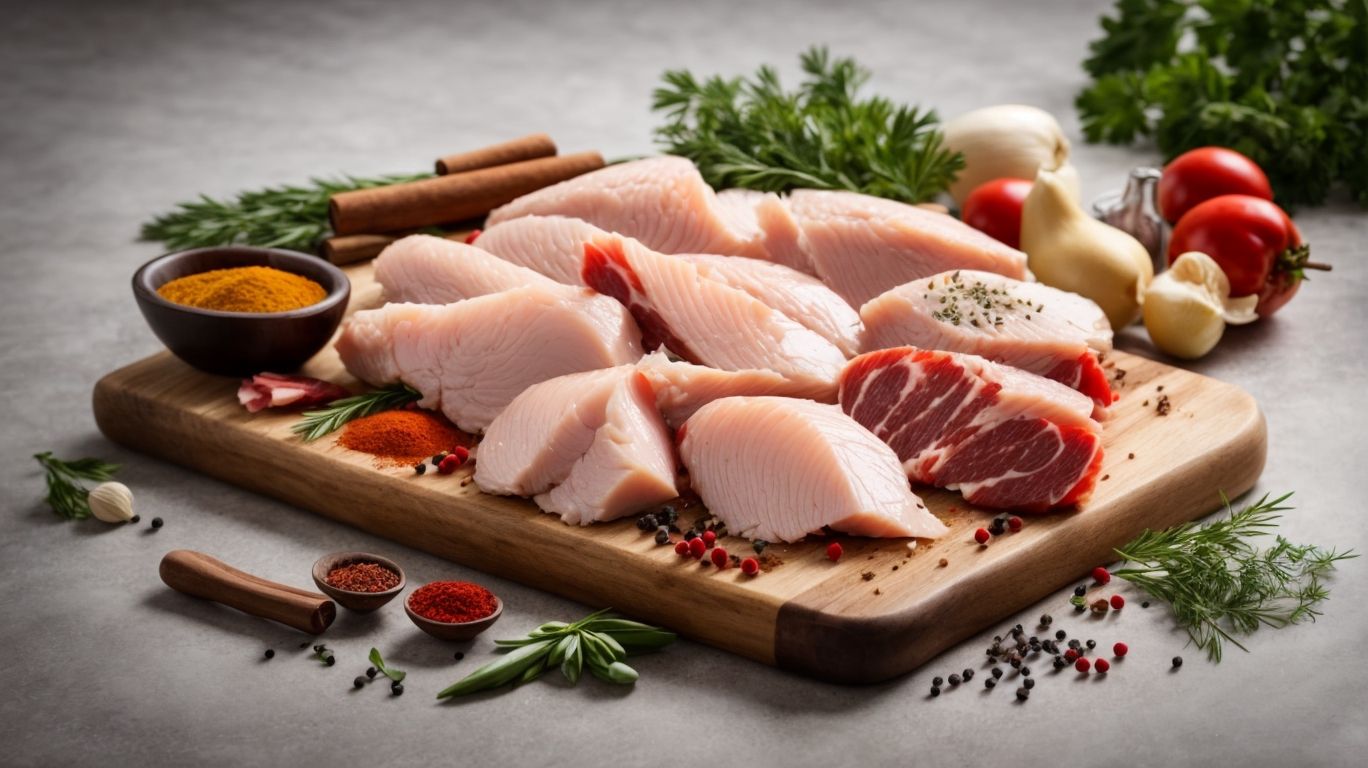
Credits: Poormet.Com – Billy Lee
Selecting the right type of chicken, whether boneless or bone-in, skinless or skin-on, and thick or thin cut, plays a crucial role in achieving the desired outcome when cooking on the stove.
When opting for boneless chicken, you ensure quicker cooking times and easier consumption compared to bone-in varieties, which may require longer simmering to reach optimal tenderness.
Similarly, choosing skin-on chicken can add flavor and moisture during the cooking process, while skinless options may be preferred for those seeking a leaner dish.
Thicker cuts like chicken breasts might demand lower heat and longer cooking durations to prevent drying out, whereas thinner cuts such as chicken cutlets can be swiftly cooked over higher temperatures.
Boneless vs Bone-in Chicken
The choice between boneless and bone-in chicken for stove cooking depends on personal preferences and the desired cooking time, with boneless cuts offering quicker cooking and bone-in cuts providing enhanced flavor.
When cooking boneless chicken on the stove, it is essential to keep an eye on the heat level to avoid overcooking and drying out the meat due to its leaner nature. On the other hand, bone-in cuts tend to require lower heat and longer cooking times to ensure the meat near the bone is fully cooked.
In terms of seasoning, thin cuts of chicken, whether boneless or bone-in, are more prone to absorbing flavors quickly due to their larger surface area. In contrast, thick cuts may require more time for the seasoning to penetrate the meat thoroughly.
Skin-on vs Skinless Chicken
Deciding between skinless and skin-on chicken when cooking on the stove influences the flavor profile, texture, and seasoning absorption of the dish, with skin-on options offering crispy textures and enhanced flavor when properly cooked.
When opting for skin-on chicken, the skin acts as a natural barrier, locking in moisture and allowing the meat to cook more evenly. The skin also provides a protective layer that helps prevent the chicken from drying out while cooking. The skin crisps up beautifully, adding a delightful crunch to each bite. To achieve this desired texture, it’s essential to ensure that the skin is rendered properly by using adequate heat and allowing enough time for it to become golden and crispy.
What Kind of Pan to Use?
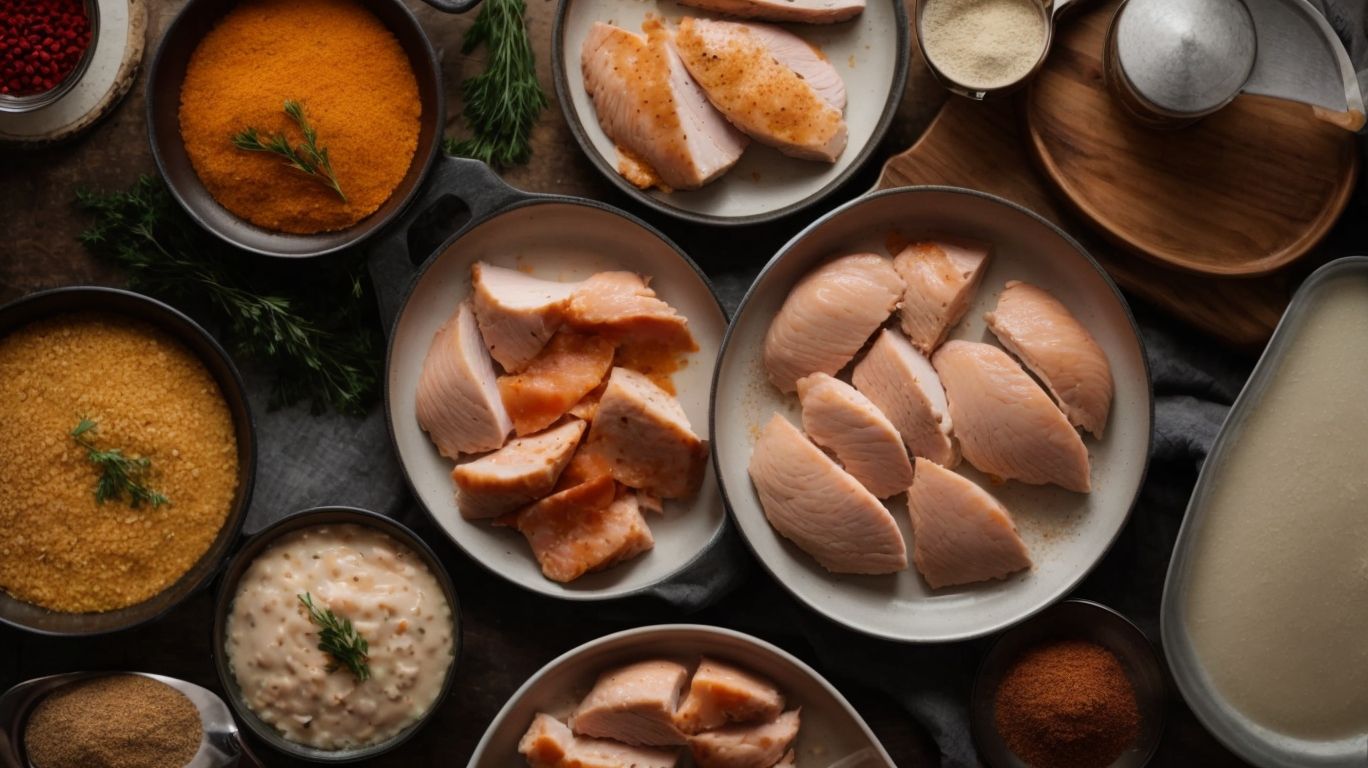
Credits: Poormet.Com – Austin Hall
Choosing the right pan for stove-cooking chicken is essential to achieve optimal results, with options such as non-stick, cast iron, stainless steel, and aluminum pans each offering unique advantages for different cooking techniques.
Regarding pan selection, heat distribution plays a crucial role in ensuring your chicken cooks evenly throughout. Non-stick pans are great for delicate cuts as they prevent sticking and require less oil, making them ideal for healthier recipes.
On the other hand, cast iron pans excel in providing excellent heat retention and are perfect for achieving that perfect sear on your chicken, giving it a beautiful crispy outer layer.
Stainless steel pans offer durability and versatility, allowing you to easily deglaze for flavorful sauces, while aluminum pans heat up quickly, making them ideal for searing and sautéing your chicken to perfection.
Non-stick vs Cast Iron
The choice between non-stick and cast iron pans for stove cooking depends on the desired level of heat retention, browning, and ease of cleanup, with non-stick pans offering convenience and cast iron pans providing excellent heat distribution and flavor enhancement.
Regarding heat retention, cast iron pans excel due to their ability to hold and evenly distribute heat, creating a perfect sear on steaks or a crispy crust on cornbread. On the other hand, non-stick pans are ideal for delicate foods like eggs or fish that require easy release without sticking.
For browning capabilities, cast iron pans stand out with their superior browning capabilities, giving dishes that coveted golden crust. Non-stick pans, while not as efficient for browning, are great for cooking foods that need less browning and more of a quick cook without sticking.
In terms of cooking experience, cast iron pans offer a versatile option that can be used on the stovetop, in the oven, or even over a campfire, enhancing the overall cooking adventure. Non-stick pans, with their effortless cleanup and maintenance, make cooking and cleaning up afterward a breeze.
When selecting a skillet, consider your cooking needs; if you aim for exceptional browning and versatility, a cast iron pan might be your best bet. But if you prioritize convenience and easy cleanup, a non-stick option could be the ideal choice for your kitchen arsenal.
Stainless Steel vs Aluminum
Deciding between stainless steel and aluminum pans for stove cooking involves considering factors such as heat conductivity, durability, and versatility, with stainless steel offering robust performance and aluminum providing lightweight options for specific cooking needs.
Stainless steel pans are known for their impressive durability, making them ideal for high-heat cooking and maintaining their appearance over time. On the other hand, aluminum pans are prized for their excellent heat conductivity, allowing for quick and even cooking. This makes aluminum pans perfect for dishes that require precise temperature control. Regarding cooking techniques, stainless steel pans are great for tasks like searing and browning, while aluminum pans excel in dishes that benefit from quick sautéing or delicate heating requirements.
Seasoning and Marinating Chicken for Stove Cooking
Seasoning and marinating chicken before stove cooking are crucial steps to enhance flavor, moisture retention, and overall taste, allowing for the creation of delicious dishes with unique flavor combinations.
Regarding seasoning, dry rubs work wonders by creating a flavorful crust on the chicken while marinades infuse the meat with moisture and depth of flavor.
Experimenting with different seasoning and marinade combinations can open up a world of culinary possibilities, from bold and spicy Cajun rubs to zesty lemon herb marinades. This unlocks a whole new level of creativity in the kitchen, enabling you to tailor the taste of the chicken to suit your personal preferences or match specific recipes or cuisines.
Beyond just enhancing the taste, the right seasoning and marinating techniques can also tenderize the meat, ensuring a juicy and succulent result.
Dry Rubs vs Wet Marinades
Choosing between dry rubs and wet marinades for seasoning chicken before stove cooking depends on the desired flavor intensity, texture enhancement, and moisture retention, with dry rubs offering simplicity and quick flavor infusion, while wet marinades provide deeper flavors and tenderization.
When opting for dry rubs, the spices and seasonings create a crust on the surface of the chicken, enhancing its texture and providing robust flavors that develop during cooking. On the other hand, wet marinades not only infuse flavors but also work to tenderize the meat, resulting in juicy and succulent chicken.
With dry rubs, the flavors tend to concentrate on the surface, offering a delightful contrast between the seared exterior and juicy interior. In contrast, wet marinades penetrate deeper into the meat, ensuring a consistent burst of flavor throughout.
Flavor Combinations
Experimenting with diverse flavor combinations such as herb-roasted, lemon pepper, Cajun, or Italian seasoning can elevate the taste profile of stove-cooked chicken, creating mouthwatering dishes that cater to various palates.
Each seasoning choice brings a unique culinary experience to the dish.
- Herb-roasted seasoning adds a fragrant blend of herbs like rosemary, thyme, and oregano, enhancing the savory notes of the chicken.
- Lemon pepper infusion provides a zesty kick, balancing the richness with a citrusy tang.
- Cajun seasoning brings a spicy, smoky flavor, perfect for those who enjoy a bit of heat in their meals.
- Italian seasoning offers a Mediterranean flair with traditional herbs like basil, parsley, and garlic, creating a comforting and well-rounded taste.
Cooking Techniques for Chicken on Stove
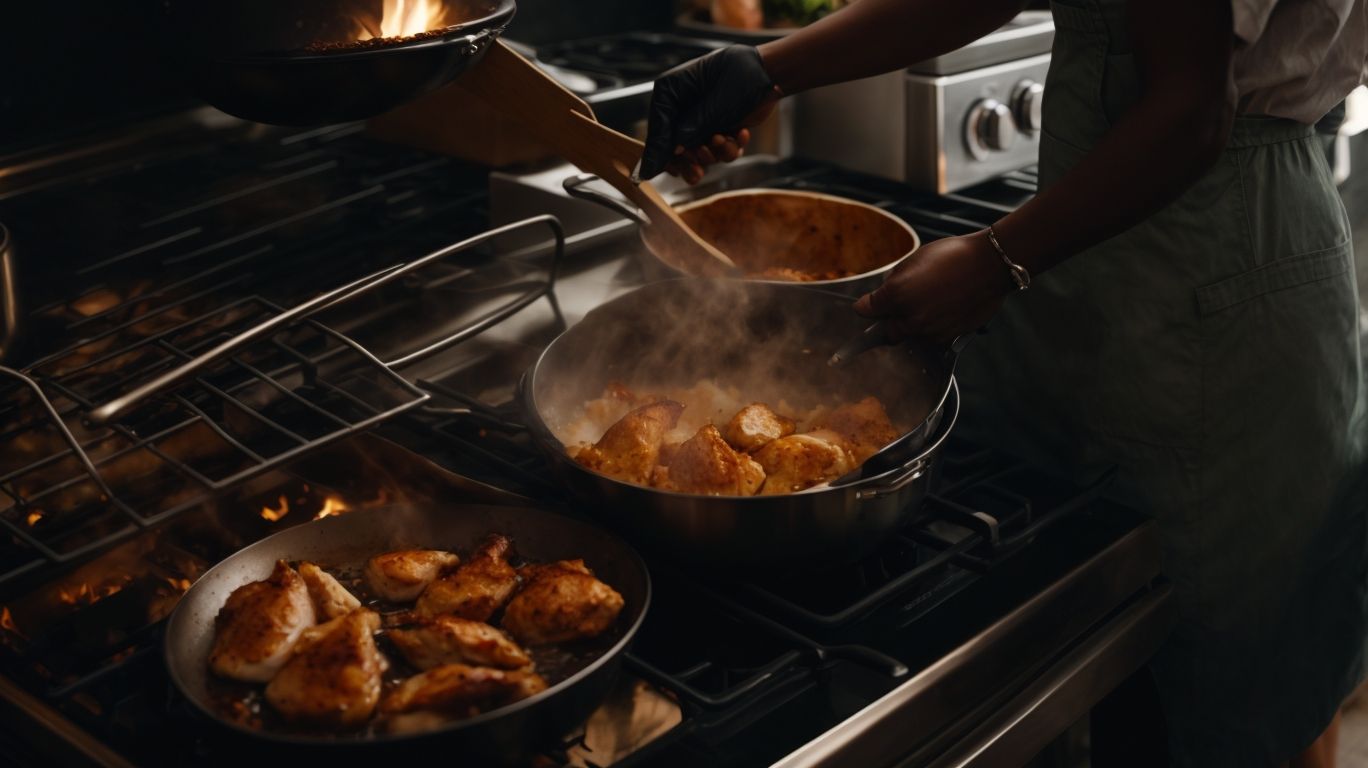
Credits: Poormet.Com – Logan Adams
Mastering cooking techniques like pan-frying, sautéing, and stir-frying for chicken on the stove is essential to achieve perfectly cooked, juicy chicken breasts with optimal browning and flavor infusion.
Regarding pan-frying chicken, ensuring the pan is preheated and using the right amount of oil is crucial. You want to achieve that delightful crispy exterior while keeping the meat juicy inside. Remember to control the heat, flipping the chicken at the right time for even cooking.
Sautéing, on the other hand, involves quickly cooking the chicken in a skillet over medium-high heat. It’s all about maintaining the right temperature, incorporating seasonings, and constantly moving the chicken to avoid burning.
For stir-frying, the key lies in high heat, quick cooking, and frequent stirring. This technique not only seals in the flavors but also allows for the chicken to retain its tenderness while being infused with delicious sauces and aromatics.
Pan-frying
Pan-frying chicken on the stove involves cooking the meat in a skillet with oil or butter, allowing for crispy browning on the outside while locking in the juices for a flavorful and succulent result.
For a successful pan-frying process, it’s crucial to preheat the skillet to the right temperature to ensure that sizzling sound when the chicken hits the pan. This initial sear helps seal in the moisture. Proper seasoning with salt, pepper, and any desired herbs or spices will enhance the overall taste. As the chicken cooks, remember to flip it occasionally for even browning. You want a nice, golden crust but still keep the meat tender and juicy inside.
Sauteing
Sauteing chicken on the stove involves cooking the pieces quickly in a hot pan over high heat, resulting in a tender, lightly browned exterior and juicy interior, ideal for quick and flavorful meals.
When sautéing chicken, the key is to keep the heat high to ensure the meat cooks rapidly and retains its moisture. This method not only locks in the natural flavors of the chicken but also creates a delicious caramelization on the surface, enhancing the overall taste.
Sautéing is perfect for busy days when you need a meal on the table in no time. The best part? You can customize the seasonings and sauces to your liking, allowing you to experiment with various flavor profiles effortlessly.
Stir-frying
Stir-frying chicken on the stove involves cooking small pieces of meat in a hot skillet, quickly stirring them to ensure even cooking, intense flavors, and minimal loss of moisture, resulting in delicious and well-seasoned dishes.
This cooking method is ideal for those busy days when you want a tasty meal in a flash. To achieve the perfect stir-fry, you need a good quality skillet that can withstand high heat without warping. The heat should be cranked up to high, and the chicken should be constantly moved around with a spatula or set of tongs. This continuous stirring ensures that each piece of chicken cooks evenly and quickly.
How to Check if Chicken is Cooked?
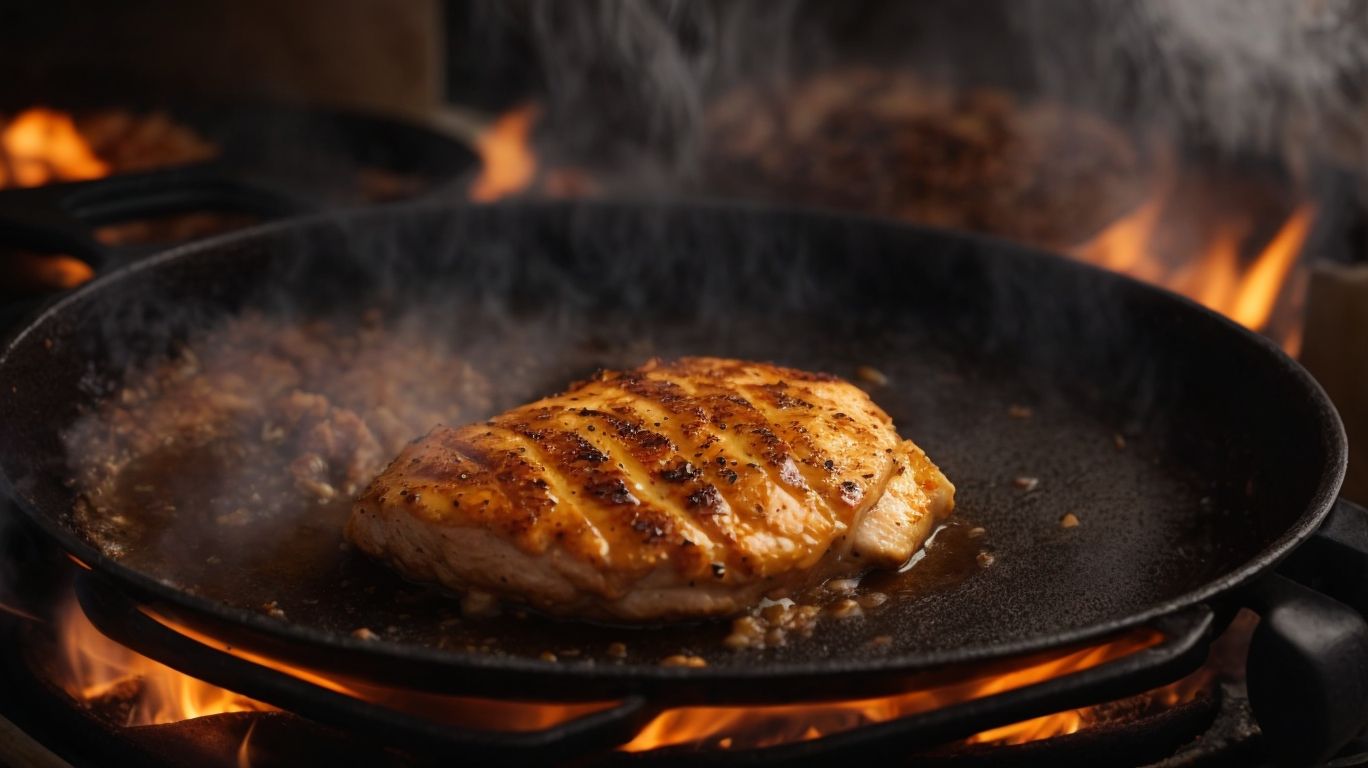
Credits: Poormet.Com – Walter Sanchez
Ensuring chicken is thoroughly cooked on the stove is crucial for food safety, with the use of an instant-read meat thermometer being a reliable method to check if the internal temperature has reached the recommended level for consumption.
When cooking chicken on the stove, different cuts require varying internal temperatures to ensure they are safe to eat. For example, boneless, skinless chicken breasts should reach an internal temperature of 165°F (74°C), while thighs and wings need to be cooked to at least 170°F (77°C). By using an instant-read meat thermometer, you can accurately monitor the cooking process and prevent the risk of consuming undercooked chicken, which can lead to foodborne illnesses. Remember, food safety should always be a top priority in the kitchen!
Serving Suggestions for Stove-cooked Chicken
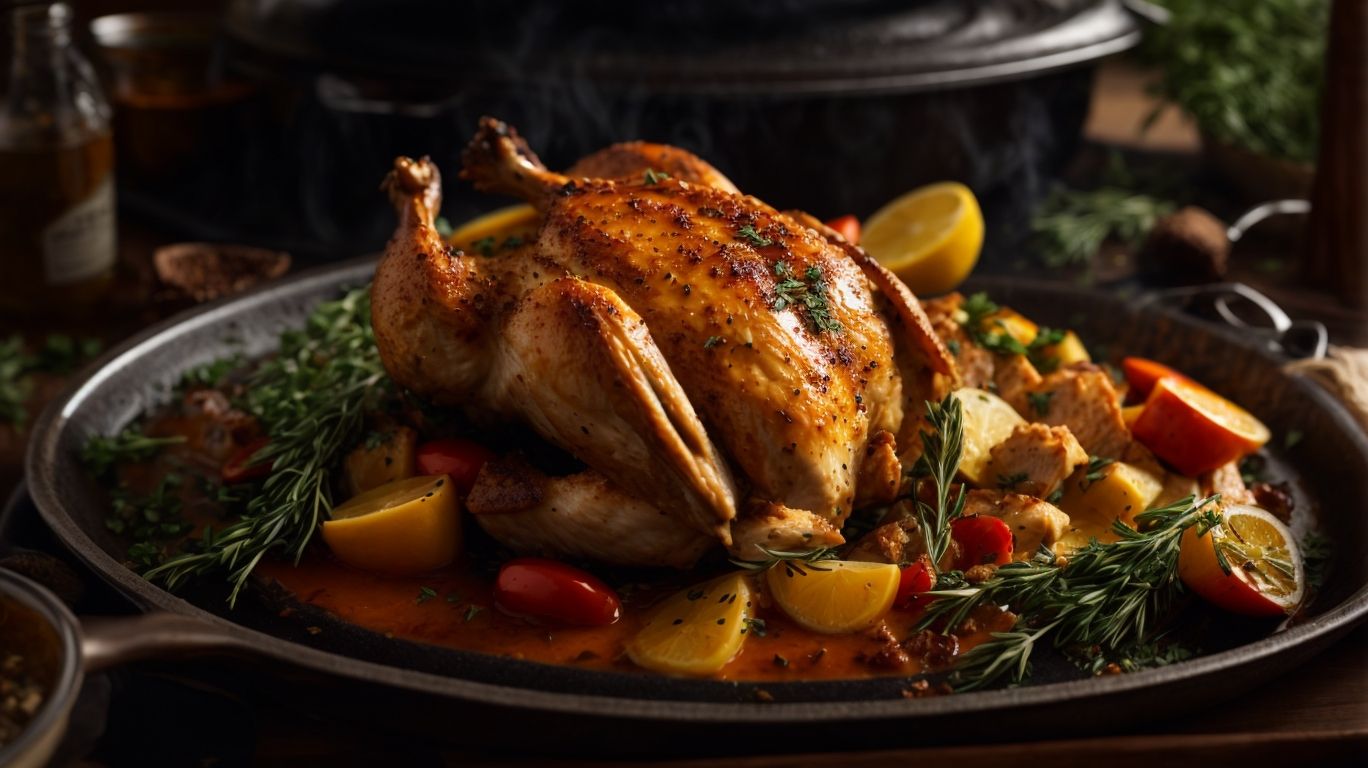
Credits: Poormet.Com – Alexander Miller
Pairing stove-cooked chicken with complementary side dishes, flavorful sauces, and appealing accompaniments enhances the dining experience, allowing for a well-rounded meal that satisfies taste buds and cravings.
Regarding choosing the perfect side dishes to accompany stove-cooked chicken, a variety of options can elevate the meal to new heights. Fresh salads with vibrant vegetables and zesty dressings add a refreshing crunch, while roasted vegetables such as carrots, bell peppers, and zucchini bring depth of flavor and a hint of sweetness to the plate. For those craving something heartier, creamy mashed potatoes or seasoned rice make for satisfying additions.
As for sauces, a creamy mushroom sauce lends a rich and velvety texture to the tender chicken, while a tangy lemon herb sauce provides a burst of freshness. Alternatively, a spicy chipotle barbecue sauce can add a fiery kick to your meal. Pairing these sauces with the perfectly cooked chicken results in a harmonious blend of flavors that will leave your taste buds dancing.
Side Dishes
Serving stove-cooked chicken with vibrant salads, protein-rich sides, or wholesome grains creates a balanced and nutritious meal that caters to diverse preferences and dietary needs.
Salads offer a refreshing contrast to the warm chicken, providing a burst of flavors and textures. Whether it’s a classic garden salad, a zesty Caesar salad, or a colorful Mediterranean salad, the freshness and crunch add depth to the meal.
Pairing the chicken with protein-rich sides such as quinoa, lentils, or beans not only boosts the meal’s protein content but also provides sustained energy and satiety. These sides can also contribute essential nutrients for overall health.
Incorporating wholesome grains like brown rice, couscous, or whole-wheat pasta complements the chicken with their nutty flavors and hearty textures. These grains offer a good source of complex carbohydrates and fiber, promoting digestive health and keeping you feeling full and satisfied.
Sauces and Accompaniments
Elevate the flavors of stove-cooked chicken with delectable sauces, savory gravies, or zesty accompaniments that add a burst of flavor and creativity to the dining experience.
Adding the right sauce to your chicken can truly transform a simple meal into a culinary delight. Whether you opt for a rich and creamy gravy to pair with your roasted chicken breasts, a tangy marinade to infuse your grilled chicken thighs with bold flavors, or a refreshing dip to accompany your crispy chicken tenders, the possibilities are endless. The key is to choose sauces that not only enhance but also complement the natural taste of the chicken, creating a harmonious and satisfying blend of flavors.
Frequently Asked Questions
What are the best cuts of chicken to cook on a stove?
Chicken breasts, thighs, and drumsticks are all great options for cooking on a stove, as they are easy to work with and cook evenly.
How do I know when the chicken is fully cooked on the stove?
The best way to ensure your chicken is fully cooked is to use a meat thermometer. It should reach an internal temperature of 165°F for safe consumption.
Do I need to marinate the chicken before cooking on the stove?
While marinating can add flavor and tenderness to the chicken, it is not necessary for stove-top cooking. You can season the chicken with your desired spices and cook it right away.
What is the best way to season chicken on the stove?
There are endless seasoning options for chicken on the stove, but some common favorites are garlic, lemon pepper, or a simple salt and pepper rub.
Can I use frozen chicken for cooking on the stove?
It is not recommended to cook frozen chicken on the stove, as it may result in uneven cooking and potential food safety risks. It is best to thaw the chicken before cooking.
How can I prevent the chicken from sticking to the pan while cooking on the stove?
To prevent the chicken from sticking, make sure the pan is well-oiled before adding the chicken. You can also use a non-stick pan or add a small amount of water to the pan while cooking.

